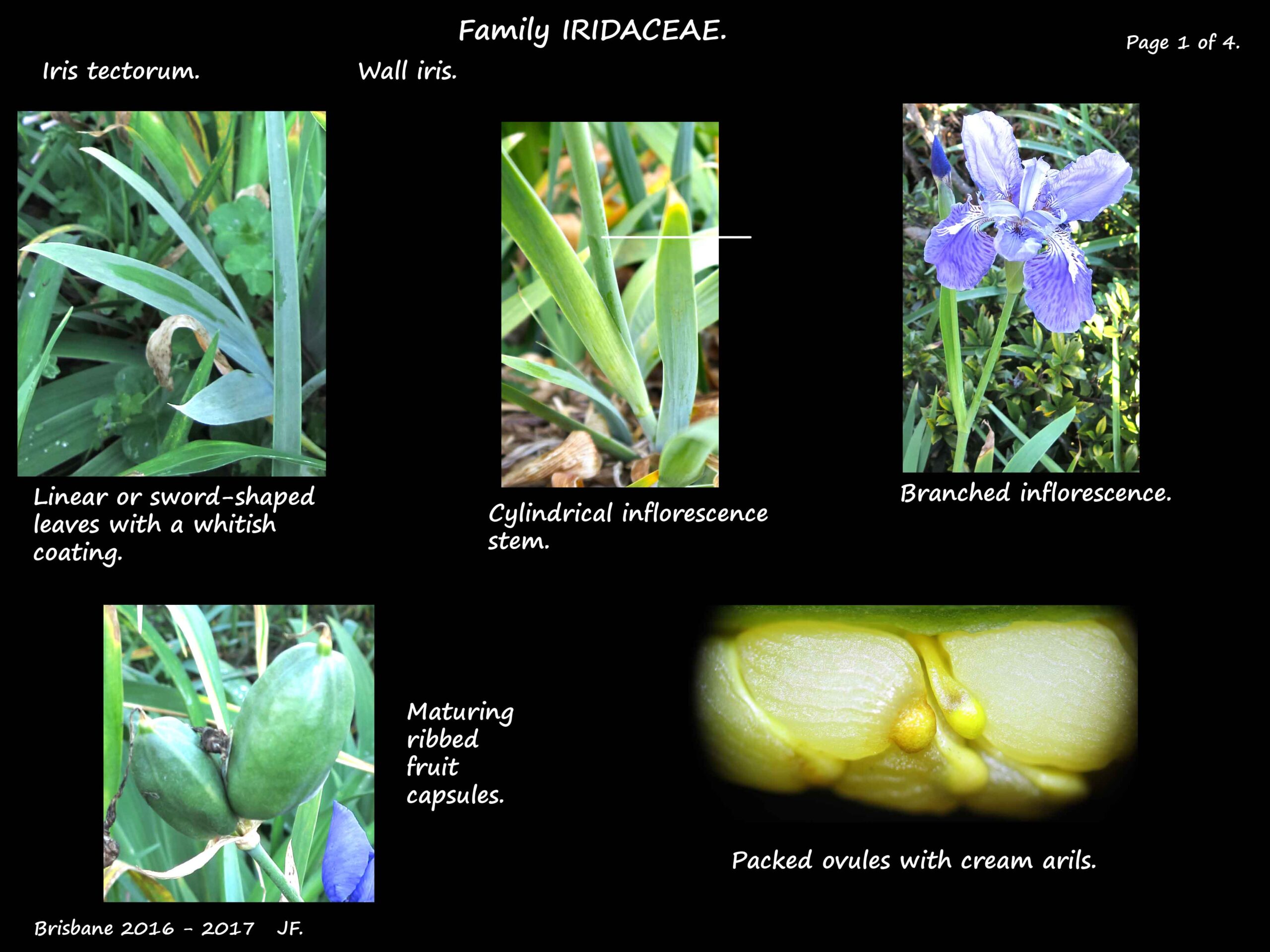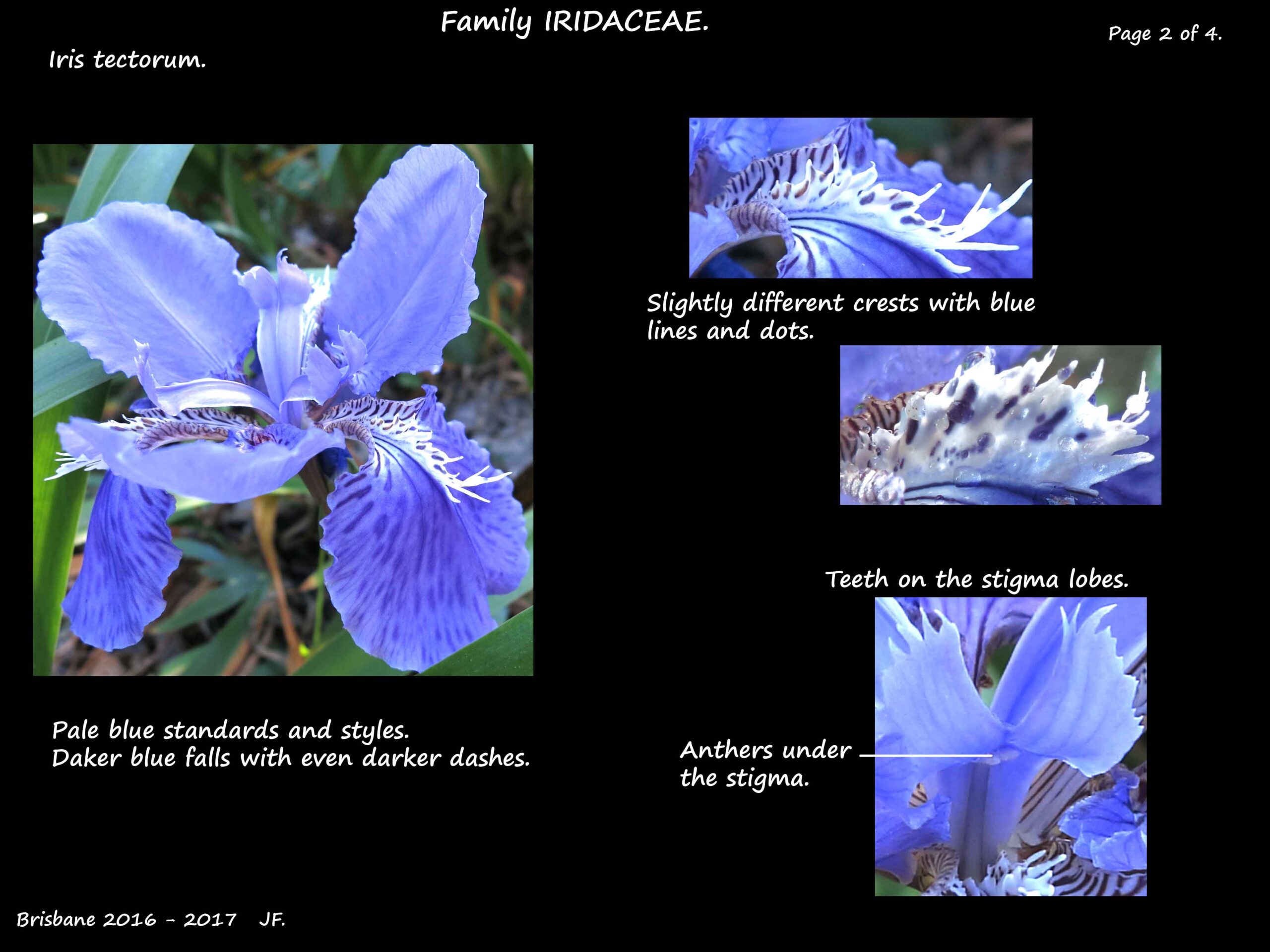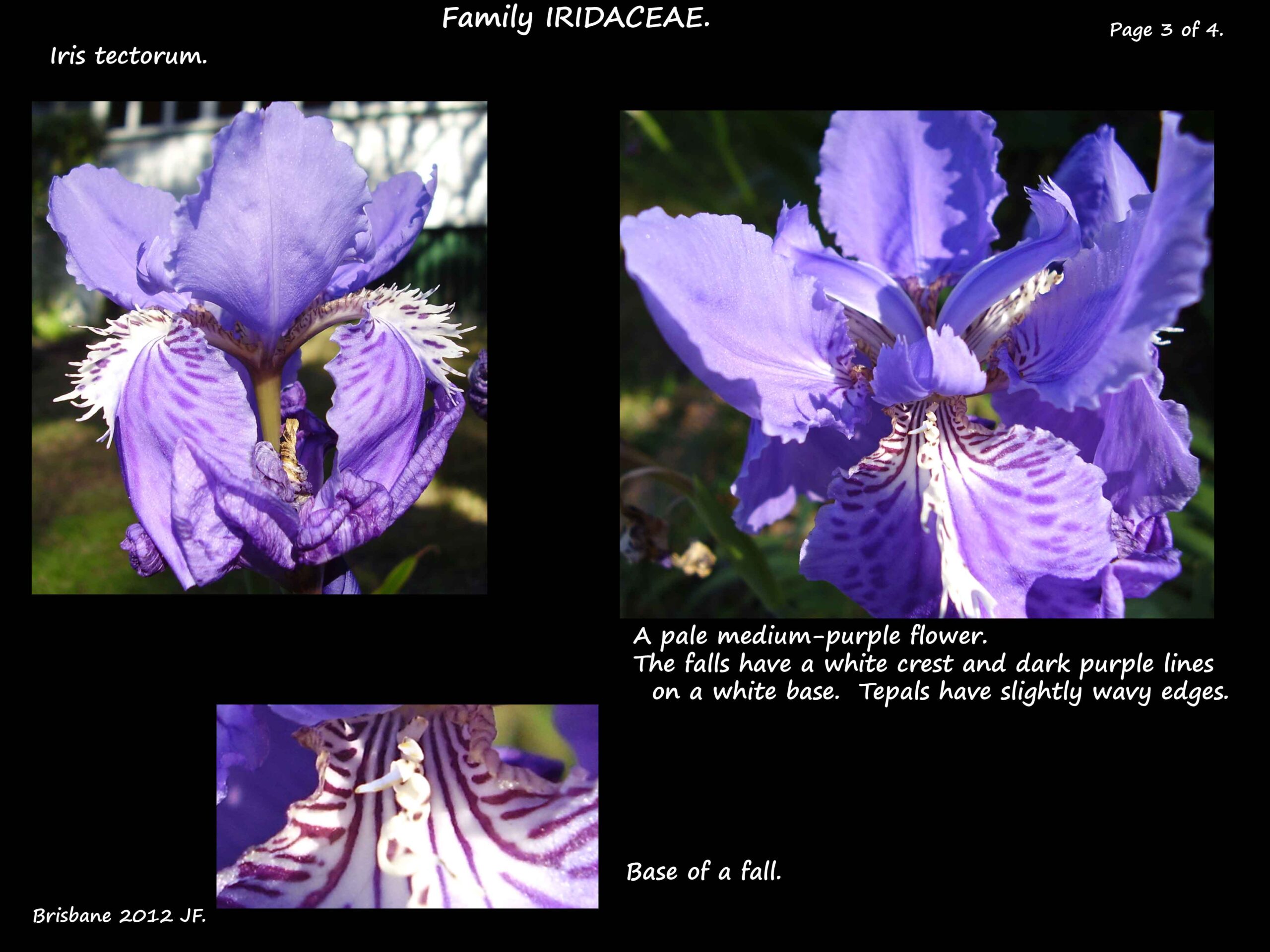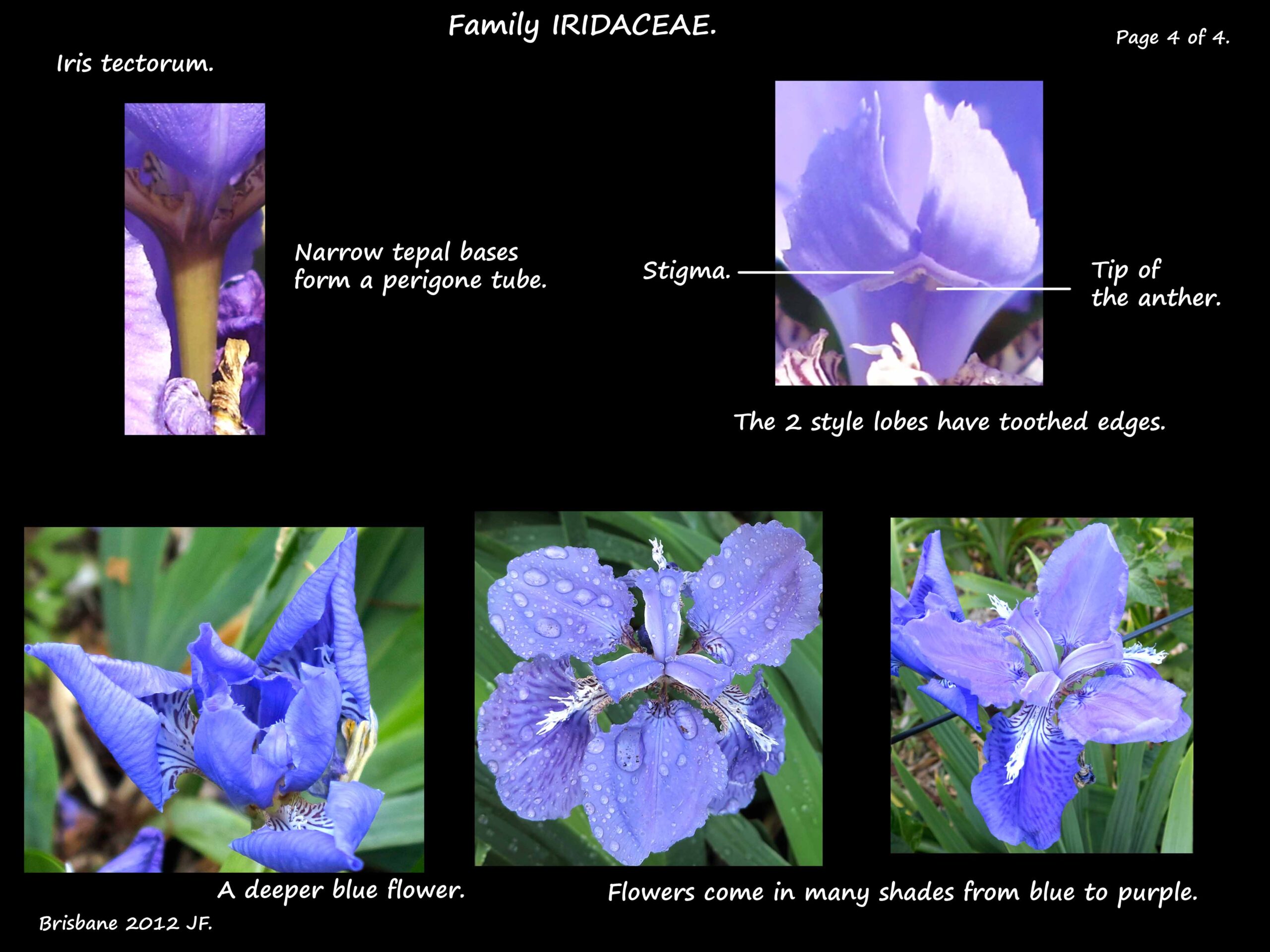Iris tectorum – Wall iris.
Family Iridaceae.
The Wall iris is a clump forming plant growing from rhizomes.
The alternate, linear or sword-shaped leaves form a basal fan.
They are up to 60 cm long and 3.5 cm wide.
Leaves are ribbed and have a whitish bloom.
Branched inflorescence stems are up to 45 cm high with 1 to 3 flowers.
Flowers are on 1 cm long pedicels with 2 bracts up to about 7 cm long at the base.
Flowers, up to 10 cm across have 6 tepals with wavy edges.
The narrow tepal bases form a tube up to 3 cm long.
The 3 horizontal standard petals are up to 5 cm long and 3 cm wide.
They have inconspicuous basal markings in a darker shade.
The 3 ovate falls, up to 7 cm long and 4 cm wide curve downwards.
The falls, slightly darker than the standards have even darker lines and spots.
The base of the falls is white and the coloured lines really stand out.
There is a central white crest with coloured spots and lines.
Flowers come in a range of colours, mostly shades of blue to purple and a white form.
Descriptive colours include blue, purple, lilac, lilac-purple, blue-lilac,
bluish-violet, lavender-blue, purple-blue and sky-blue.
The 3 stamens, 2.5 cm long are inserted at the base of the tepals.
The bright yellow, basifixed anthers lie just under the stigmas.
The 3 broad styles, up to 3.5 cm long are the same colour as the standards.
The stigmas lie at the base of the 2 end lobes on each style.
The lobes have toothed edges.
The 2 cm long inferior ovary, of 3 fused carpels has 3 locules.
It contains numerous white ovules with axile placentation.
The erect fruit are 6-ribbed capsules up to 6 cm long and about 2 cm wide.
The capsules mature from green to brown.
The pale pear-shaped seeds have a cream attachment (aril).
There are numerous cultivars including one with variegated foliage.
J.F.





